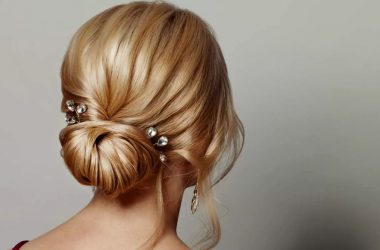Have you ever dyed your hair a funky color, only to regret it later when you can’t seem to get the dye out no matter how hard you try? Or maybe you’ve been using harsh chemical dye removers that leave your hair feeling dry and damaged. If so, then this post is for you! In today’s blog post, I’m going to show you some natural ways of removing permanent hair dye without causing any damage to your hair. So read on and find out how you can remove that pesky hair dye safely and naturally!
Hair color remover DIY at home
If you’ve dyed your hair with permanent hair color and you’re not happy with the results, don’t worry! There are a few ways to remove permanent hair dye without damaging your hair.
One way is to use a clarifying shampoo. Clarifying shampoos are designed to remove build-up from your hair and can also help strip away unwanted hair color. Be sure to use a moisturizing conditioner afterwards to counteract the drying effects of the clarifying shampoo.
Another way to remove permanent hair dye is to use a color remover. There are several types of color removers on the market, so read the directions carefully before using one. Generally, you’ll apply the color remover to your wet hair and let it sit for a few minutes before rinsing it out. Then, follow up with a conditioner to keep your hair healthy and hydrated.

If you want to avoid using harsh chemicals to remove your hair color, you can try a few natural methods. One is to mix equal parts baking soda and water into a paste, then apply it to your hair and let it sit for 15 minutes before rinsing it out. Another option is to make a mixture of 1 part apple cider vinegar and 2 parts water, then massage it into your scalp and hair for a few minutes before rinsing it out.
Whatever method you choose, shampoo and condition your hair as usual afterward to restore its natural moisture balance. And if you’re not happy with the results of your color removal efforts, remember that you can always dye your hair again!
How can I strip my hair color without bleach?
You will need to use a color remover to strip your hair color without bleach. There are many different brands and types of color removers on the market, so read the instructions carefully before using one. Once you have removed most of the color from your hair, you can use a clarifying shampoo to remove any remaining residue. Again, follow the instructions on the clarifying shampoo bottle, as some products may cause further damage to your hair if not used correctly.

How to remove hair color with baking soda
If you’ve dyed your hair and you’re not happy with the color, don’t worry — you can easily remove hair color with baking soda. Baking soda is a gentle abrasive that will remove the hair color without damaging your hair. Plus, it’s a natural product, so you don’t have to worry about any harmful chemicals.
To remove hair color with baking soda, you’ll need:
- 1 cup baking soda
- 1 cup water
- A bowl or container
- A shower cap or plastic bag
Instructions:
- Mix together the baking soda and water in the bowl or container.
- Apply the mixture to your hair, making sure to saturate all of your hair.
- Cover your hair with the shower cap or plastic bag.
- Leave the mixture on your hair for 30 minutes to 1 hour.
- Rinse your hair thoroughly with warm water.
- Shampoo and condition your hair as usual.









 Miraculously evocative though they may be, raw and organic, Tom does not leave his photographs at the whim of environmental elements. He is instead driven to shape, and then perfect, every detail of every scene he creates, building his sets with his own hands from the ground up—transforming the bare walls of his studio into a lurid dreamscape, a languorous moment of passion, or a clandestine wood. He also draws from the tradition of still-life to explore the complex nuances of life on a closer, more intimate scale. Full of suggestive details and suffused with atmospheric lighting, Tom’s photographs read as suspended narratives—about our innermost drives and our fragile place in the world.
Miraculously evocative though they may be, raw and organic, Tom does not leave his photographs at the whim of environmental elements. He is instead driven to shape, and then perfect, every detail of every scene he creates, building his sets with his own hands from the ground up—transforming the bare walls of his studio into a lurid dreamscape, a languorous moment of passion, or a clandestine wood. He also draws from the tradition of still-life to explore the complex nuances of life on a closer, more intimate scale. Full of suggestive details and suffused with atmospheric lighting, Tom’s photographs read as suspended narratives—about our innermost drives and our fragile place in the world.